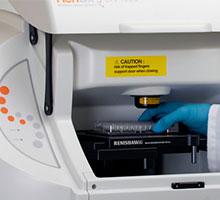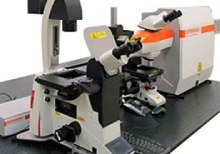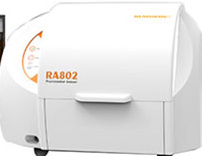| |
Problems with conventional systems
|
Solutions provided by RA802
|
| Sample focusing |
Finding focus…
- Pharmaceutical samples are often rough or curved
- Conventional Raman and infrared microscopy techniques force users to manually focus the sample surface before beginning the measurement, however, even if the sample is only slightly uneven or curved, the microscope will quickly lose focus when the focal depth is on a scale of microns
- This results in poor quality, out-of-focus images
|
LiveTrack – the world's leading focus-tracking technology
- RA802's LiveTrack automatically moves the sample along x, y and z axis under the microscope objective to maintain focus throughout the measurement, ensuring highest quality chemical images across the whole sample
- Image quality is never compromised
|
| Speed of analysis |
Losing time…
- Conventional Raman microscopy systems perform what's called a point measurement
- During a point measurement, individual Raman spectra are collected at pre-defined steps across the sample surface
- This takes a long time – older point measurement systems would need to run overnight and would still only manage to collect spectra over a small sample area
- Point measurements also increase the chance of sample damage by focusing a high-powered laser on a single point no greater than a few microns
|
StreamLine - the world's fastest tablet mapping solution…
- Instead of focussing the laser onto a single point, StreamLine distributes the laser power into a focussed 90 µm laser line
- StreamLine allows the detector to accumulate signal as the sample traverses the laser line increasing the imaging speed and decreasing the risk of sample damage
- Collection speeds of 1,500 spectra per second are possible using StreamLine, decreasing analysis time
|
| Ease-of-use |
Combating complexity…
- One of the biggest considerations for any pharmaceutical laboratory evaluating capital equipment purchases is the cost of employing staff to run the equipment
- Raman imaging is historically viewed as a highly specialised technique, requiring a dedicated end user to run and maintain the equipment
- If the end user leaves, the instrument can undergo periods of significant downtime until a new user can be trained
|
Simplicity by design…
- RA802 has dramatically simplified Raman imaging
- RA802 is suitable for use by technicians through to principal scientists
- The hardware is entirely software driven with minimal user intervention
- RA802 is designed for use in an open-lab environment by multiple casual users with minimal training, all but eliminating instrument downtime
|
| Resolution |
Leaving matters unresolved…
- Samples can appear homogeneous at the length scale of tens to hundreds of microns but can exhibit local inhomogeneity in the low to single digit microns
- When looking for trace levels of impurities, resolution is key to identifying contributions from small amounts of material
- Conventional imaging techniques such as IR microscopy are limited to resolution in the tens of microns by the sensitivity of the detector and the wavelength of light
- Traditional Raman systems suffered from slow analysis speeds which meant that building up a high-resolution image took too long – the only way to decrease the analysis time was to reduce the resolution
|
Why compromise?
- RA802's LiveTrack and StreamLine mean that sample analysis is faster than ever
- A whole tablet can be mapped in as little as 5 minutes at low-resolution, or in just 2 hours at the highest resolution
- The lower laser wavelengths employed in Raman spectroscopy means that resolution can be as high as 1 µm per pixel – allowing scientists to truly understand the local inhomogeneity of their sample
|
| Batch mapping |
Minimising user involvement…
- Traditional chemical imaging systems are single-sample instruments
- Once the analysis has finished, the user is required to remove the old sample and insert the new sample before they can setup the next run
- This is time consuming and inhibits the ability of users to run large batches of multiple samples
|
The solution for the busy scientist…
- Batch mapping allows the user to program multiple sample to run multiple sequentially, freeing up the user to do other things
- Renishaw provide bespoke tablet moulds specific to the users' samples
- These moulds hold the samples in place whilst the software seamlessly moves from one sample to the next on completion of each run
|

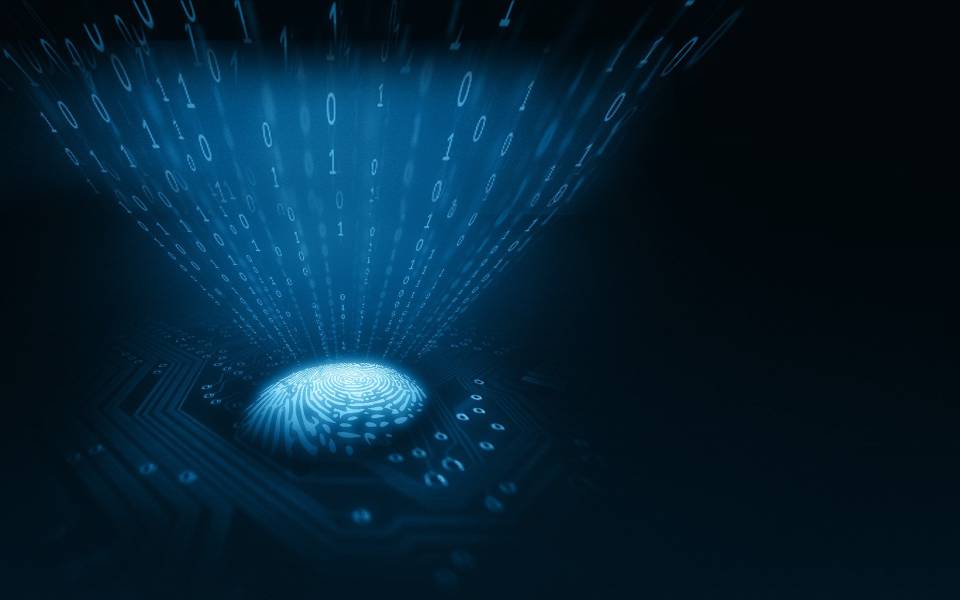

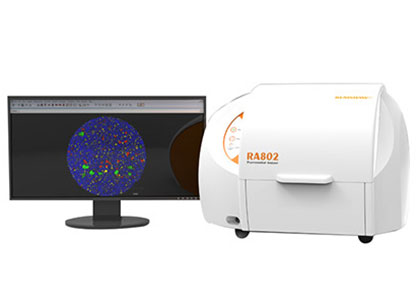
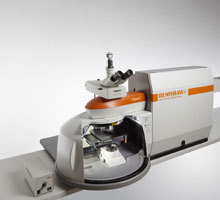
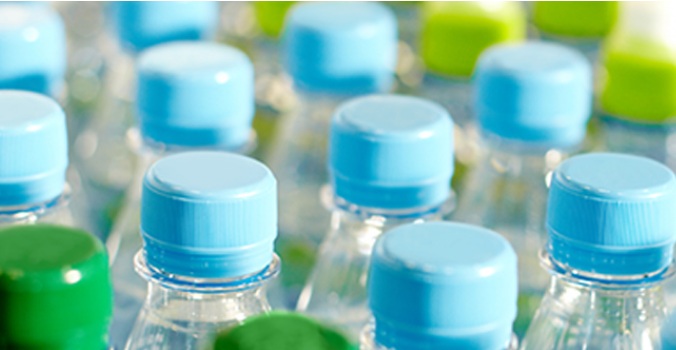
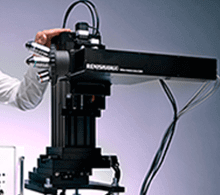
.png)
